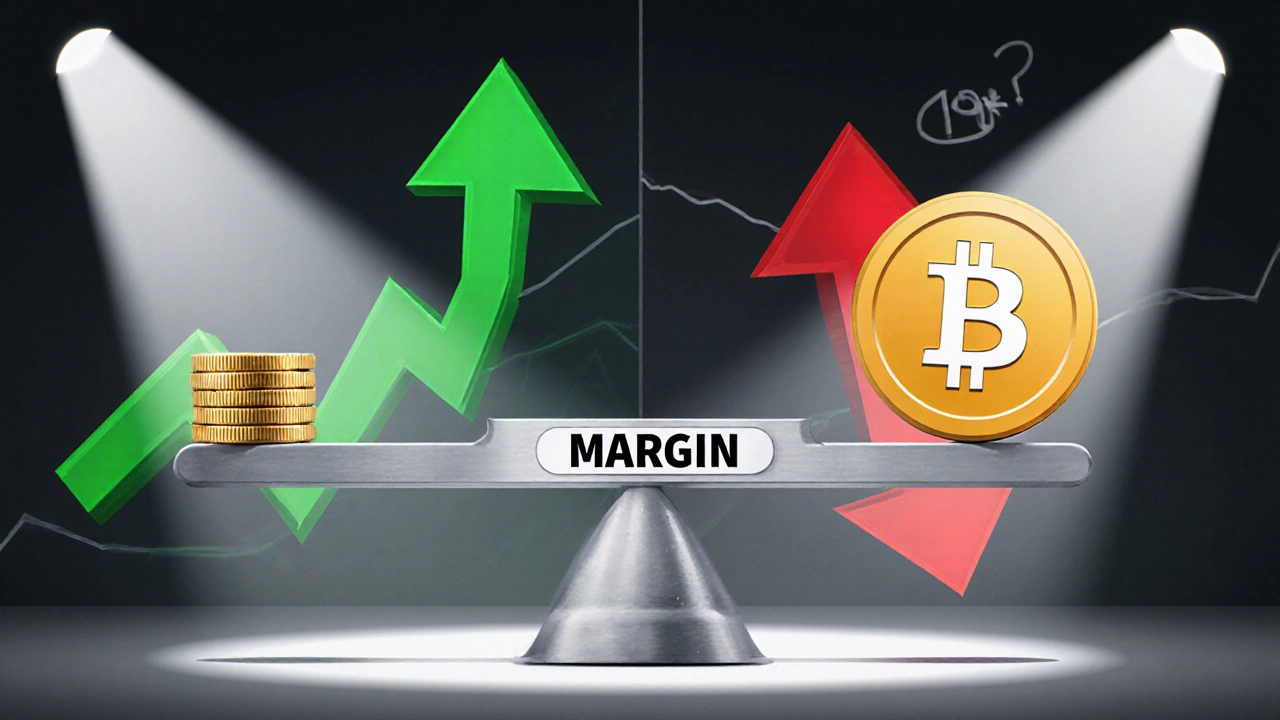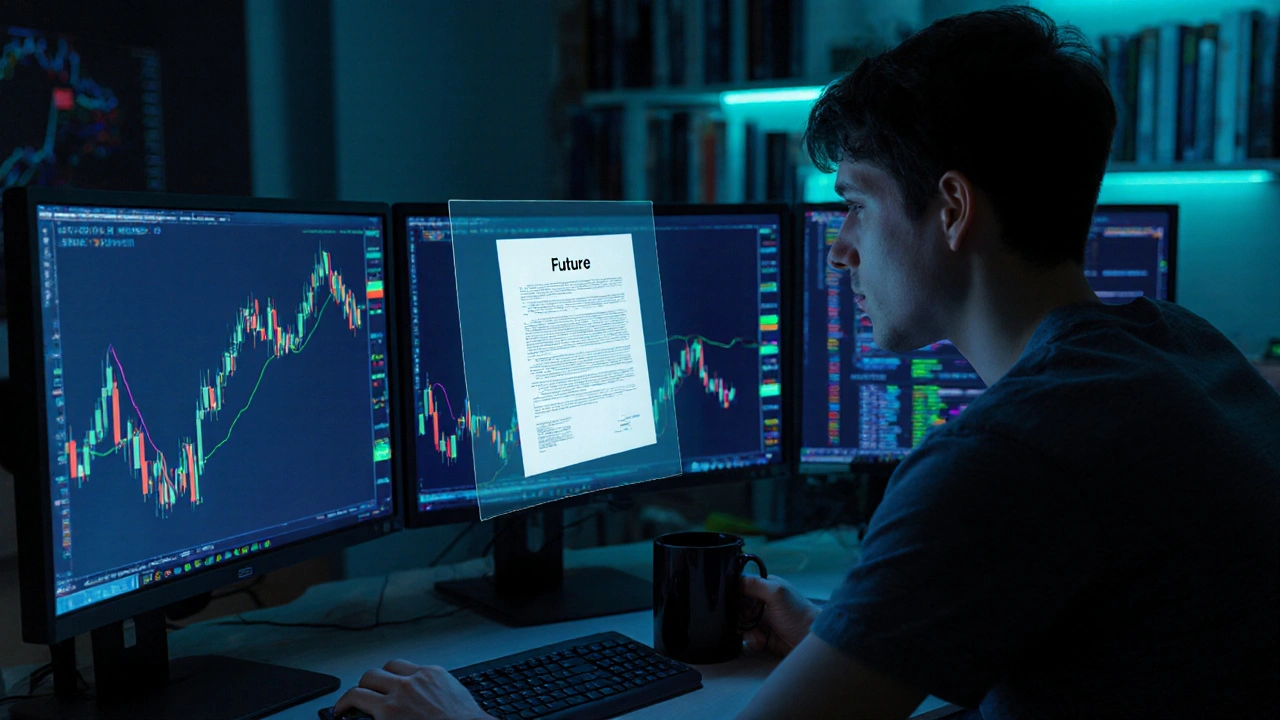Key Takeaways
- Crypto futures let you profit from price moves without owning the underlying coin.
- Margin is the collateral you lock up; leverage multiplies both gains and losses.
- Quarterly contracts expire, while perpetual contracts never do but require funding payments.
- Understanding liquidation triggers and funding rates is critical for risk management.
- A clear checklist can keep new traders from costly mistakes.
When you hear crypto futures trading is the practice of buying or selling standardized contracts that derive their value from a cryptocurrency’s future price, you’re essentially betting on where the market will go without owning the coin itself. The idea sounds like a Wall Street trick, but the mechanics are straightforward once you break them into bite‑size parts.
What Exactly Are Crypto Futures?
A futures contract is an agreement to buy or sell an asset at a predetermined price on a set future date. In the crypto world the underlying asset is usually Bitcoin, Ether, or other major tokens. Because the contracts are standardized, you can trade them on regulated exchanges or crypto‑specific platforms like Binance, Bybit, or CME. The contract’s price moves in lockstep with the spot market, but you never have to hold the actual cryptocurrency unless you choose to settle physically.
Core Components of a Futures Trade
Every future you see on a trading screen is built from a few key pieces:
- Underlying Asset - the crypto whose price you are tracking.
- Contract Size - how much of the underlying each contract represents (e.g., 0.01BTC).
- Expiration Date - when the contract settles. Some have a set date, others are perpetual.
- Settlement Method - cash‑settled (pay the price difference) or physical (actually deliver the coin).
Understanding these attributes lets you compare contracts side by side and pick the one that matches your strategy.
Placing a Trade: Long vs. Short
Just like with spot crypto, you can go long (buy) if you think the price will rise, or go short (sell) if you expect a drop. The exchange matches your order with a counter‑party - often another trader or a market maker. Because futures are leveraged, you don’t need the full contract value in cash; you only need enough margin to cover potential losses. The moment you click ‘Buy’ or ‘Sell’, the platform calculates your initial margin requirement based on the chosen leverage.

Margin and Leverage Explained
Leverage is a multiplier that lets you control a larger position with a smaller amount of capital. If an exchange offers 10× leverage on a Bitcoin future, $1,000 of margin lets you control $10,000 worth of contracts. While this amplifies profits, it also magnifies losses. If the market moves against you by 10% on a 10× leveraged trade, your entire margin is wiped out, triggering a liquidation.
Most platforms let you adjust leverage per trade, but higher leverage demands stricter maintenance margin. If the value of your position falls below the maintenance level, the system automatically adds a liquidation fee and closes the position to protect the exchange.
Settlement Types: Quarterly vs. Perpetual
There are two dominant futures formats in crypto:
| Contract Type | Underlying | Expiry | Settlement | Typical Leverage | Funding Mechanism |
|---|---|---|---|---|---|
| Quarterly Futures | BTC, ETH, etc. | Every 3 months (e.g., Mar, Jun, Sep, Dec) | Cash‑settled | 5‑20× | None - price converges at expiry |
| Perpetual Futures | BTC, ETH, many altcoins | Never expires | Cash‑settled | Up to 100× on some exchanges | Funding rate paid every 8hours |
| Inverse Futures | BTC, ETH | Quarterly or Monthly | Physical (delivers underlying) | 5‑10× | None - uses inverse contract math |
Quarterly contracts give you a clear expiry, which can be useful for hedging. Perpetual contracts stay open indefinitely but require you to pay or receive a funding rate - a periodic payment that keeps the perpetual price tethered to the spot market. If the perpetual price trades above spot, long traders pay short traders, and vice‑versa.
Risks, Liquidations, and Funding Rates
Because futures are leveraged, the biggest danger is a rapid liquidation. Exchanges monitor your position’s maintenance margin. Drop below that, and an automatic liquidation event fires. You lose your initial margin and may incur extra fees.
Funding rates can also eat into profits on perpetual contracts. When demand for longs outweighs shorts, the rate becomes positive, meaning longs pay shorts. If you hold a long position through a high‑funding period, you’ll see a small daily charge that can add up.
To manage risk, many traders set stop‑loss orders, keep a buffer above the maintenance margin, and limit leverage to a level they’re comfortable with.
Step‑by‑Step Example: Opening a BTC Perpetual Future
- Choose a reputable exchange (e.g., Binance, Bybit) and complete KYC.
- Deposit $2,000 USDT into your futures wallet.
- Navigate to the BTC/USDT perpetual market.
- Select 10× leverage. The platform shows you that $200 margin will control $2,000 worth of contracts.
- Enter a long order for 0.05BTC at the current price of $28,000.
- Set a stop‑loss at $26,500 (roughly 5% below entry) and a take‑profit at $31,000.
- Monitor the funding rate displayed on the screen - it’s currently +0.015% every 8hours.
- If the price climbs to $30,500, your position gains $750 (10× on $75 price move) before fees.
- Should the price drop to $26,400, your stop‑loss triggers, closing the trade and preserving the remaining margin.
This simple flow shows how margin, leverage, stop‑loss, and funding all interact in a real trade.
Checklist for New Futures Traders
- Verify the exchange’s regulatory status and insurance coverage.
- Understand the contract’s settlement type - cash vs. physical.
- Calculate initial and maintenance margin before opening a position.
- Start with low leverage (2‑5×) until you grasp price dynamics.
- Set stop‑loss and take‑profit orders on every trade.
- Track funding rates on perpetual contracts; avoid high‑rate periods if possible.
- Keep a risk‑to‑reward ratio of at least 1:2 for each trade.
Frequently Asked Questions
Do I need to own Bitcoin to trade Bitcoin futures?
No. Futures are derivative contracts, so you only need margin collateral. You never have to hold the underlying coin unless you choose a physically settled contract.
What’s the difference between a perpetual and a quarterly future?
Perpetual contracts never expire and rely on a periodic funding rate to stay near the spot price. Quarterly contracts have a fixed expiry date; they settle on that date, typically via cash settlement.
How is the funding rate calculated?
Funding equals the difference between the perpetual price and the spot index, adjusted for interest rates and a premium. Exchanges publish the rate every 8hours and it can be positive or negative.
Can I trade crypto futures on a traditional brokerage?
Yes, some regulated brokers now offer Bitcoin and Ether futures that are cleared through CME or CBOE. These contracts follow the same margin‑leverage principles but are subject to stricter reporting.
What happens if my position is liquidated?
The exchange automatically closes your position at the market price, seizes your remaining margin, and may add a liquidation fee. You lose the collateral you put up for that trade.

